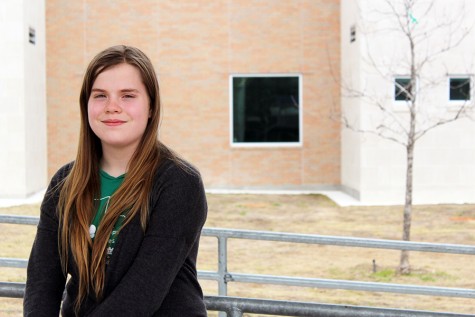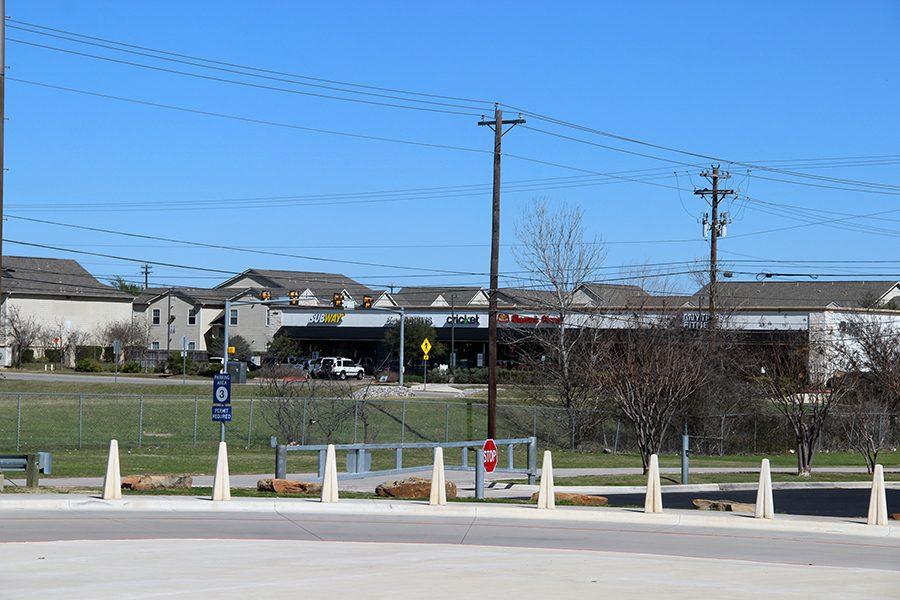The lunchtime debate
A closed campus supports safety and nutrition
Students are able to see multiple restaurants that are open during lunch periods from campus. The shopping complex is across a busy street.
To the lament of some students, all of LISD’s campuses are closed, meaning students must be signed out by a guardian before leaving the campus prior to dismissal time. This includes lunch periods where students craving a sugary doughnut must resign to staring at the shop lovingly from across the street. Despite this, the campus should stay closed because of attendance, safety, and nutrition.
The primary concern of administrators with an open campus is tardiness or students simply not returning at all. Students leave the campus illicitly already; allowing an open campus could increase the number of students skipping class. Even if a student budgets their time perfectly to drive and purchase their food, obstacles may occur that cause students to be late, such as accidents or car troubles. The school day is stripped for time, being 15 to 30 minutes late because the line was too long or the car ran out of gas could cause credit or certificate loss overtime. There is a significantly higher risk of car accidents during open lunch periods than any other time of day… Opening up lunch periods will most likely cause more accidents and injury to students.
Leaving the campus during lunch periods’ purpose is to get food from an outside restaurant or bodega. This compromises many of the nutritional goals the district sets and promotes with the school lunches. With a doughnut and sandwich shop across the street coupled with studies on open high school lunches, it’s unlikely students will make healthy choices for off-campus lunch.
On-campus food services would be negatively affected by students purchasing food off-campus. Due to more students purchasing and eating off campus, it could eliminate the need for as many lunch employees and reduce funding for food programs for at-need students. This also has been shown to add a social stigma for students who have to eat on-campus for budgetary reasons; being unable to spend $5 on a sandwich off-campus daily could limit crucial social and bonding time with their peers.
If students choose to leave campus, the chance of injury or accident increases. A PHAI study has shown that there is a significantly higher risk of car accidents during open lunch periods than any other time of day when compared with closed campus statistics. Plus, there tend to be more students per car during open lunch periods and a time crunch. Opening up lunch periods will most likely cause more accidents and injury to students.
Arguments for open lunch periods cite giving students freedom and independence. However, how much independence can one truly get from walking across the street and buying a sandwich? The freedom to choose a lunch, as guaranteed by our founding fathers, can be solved by purchasing meals beforehand.
An open campus for students brings many risks that outweigh the benefits. Despite claims of increased independence and freedom, an open campus can lead to tardiness, student injury, loss of social time, and decreased nutrition and programs for at-need students. Since student safety is a priority for LISD, it’s not likely that campuses will be open soon. Those sweet doughnuts will sadly have to remain behind closed doors.

Hi! I'm Michelle Parker, this is my second year on The Roar staff. I’m very excited to see what this year brings us. I have three dogs whom I love and...















